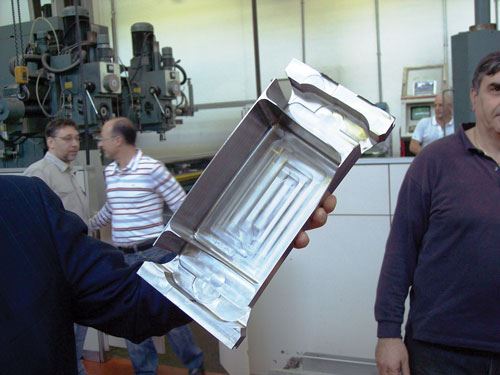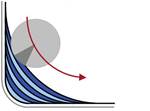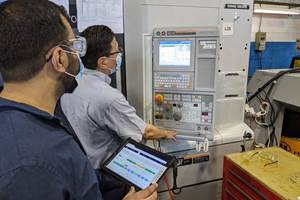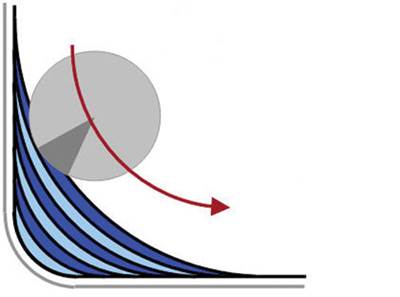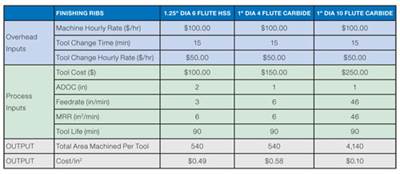How To Machine Aircraft Titanium (Introduction To A Series)
Choose cutters, depths and tool paths with attention to particular steps in the process, and you can machine titanium more efficiently than you might suspect. Boeing offers practical tips.
New aircraft designs that make more extensive use of composite materials make more extensive use of titanium at the same time. Compared to aluminum, titanium is more compatible with composites in aircraft assemblies. As a result, the Boeing 787 Dreamliner, which is 50 percent composite materials by weight, is also 15 percent titanium by weight. That is significantly more titanium than the previous (heavier) Boeing 777.
Obtaining enough titanium to meet the needs of this latest generation of aircraft has been a challenge. Titanium prices have risen in response to the demand, and new capacity for producing titanium alloys is coming online. Still unaddressed, however, is the question of machining all that titanium. While no one can say for sure, it seems unlikely that there is currently enough titanium machining capacity to meet all the needs of the various high-titanium-content planes being introduced to the market. One way or another, the aircraft-industry supply chain will have to realize more of this capacity. Shops will be asked to machine more titanium than ever before, and also to machine it faster.
One of the leading organizations in the study of just how to do this is the Boeing Research and Technology group (BR&T) based in St. Louis. Boeing researchers here develop techniques for more effective titanium machining—techniques that they convey to Boeing’s suppliers.
The archetypical titanium part is shown at right (the photo of the part held in a hand). The machining of aircraft structures made of titanium, like those made of aluminum, is fundamentally an exercise in machining pockets. Aircraft parts, with their webs and ribs, are made of many pockets. The pockets are particularly deep on the 787, because some deep-pocket aluminum parts have been replaced with titanium. Therefore, the pocket machining challenges are that much greater.
In aluminum, machining any particular pocket such as the one shown might not involve separate roughing and finishing operations. Titanium is different. Aircraft-industry manufacturers have learned to precisely cut aluminum at relatively consistent radial depths that allow even a heavy depth of cut to complete a wall or rib. But in titanium, the slow cutting speed means that roughing and finishing are still needed in order to remove the volume of material productively. As a result, machining a titanium part effectively involves a series of discrete operations, with different proven techniques at each step.
Those techniques are outlined in the collection of articles in the links under “Editor Picks” at right. The information comes from BR&T (or, in the case of one of the articles, from a major cutting tool supplier). As the articles describe, machining titanium aircraft parts productively does not necessarily demand a new machine tool or even any particular style of machine.
It also does not require great cost. The final article at right makes this clear. Any of the techniques in the articles below might be applied separately, but together, they produce a radically different titanium milling process that is likely to save not only time, but also considerable expense.
Editor’s note: You can read other parts in this series by clicking on Read Next (to the right).
Related Content
SolidCAM Wants to Help Machine Shops Get into Additive Manufacturing
SolidCAM's partnership with Desktop Metal is aimed at making additive manufacturing more accessible to job shops and other manufacturers.
Read MoreToolpath-Level Machine Monitoring Improves Aerospace OEE
Machine monitoring software that records historical efficiency to the toolpath level helped aerospace manufacturer Leesta improve its OEE by ten points.
Read More5 Tips for Running a Profitable Aerospace Shop
Aerospace machining is a demanding and competitive sector of manufacturing, but this shop demonstrates five ways to find aerospace success.
Read MoreWhen Organic Growth in Your Machine Shop Isn’t Enough
Princeton Tool wanted to expand its portfolio, increase its West Coast presence, and become a stronger overall supplier. To accomplish all three goals at once, acquiring another machine shop became its best option.
Read MoreRead Next
How To Machine Aircraft Titanium: Getting The Metal Out
Part of a series of articles on machining pockets in titanium parts, this article describes various options for roughing the hard metal efficiently.
Read MoreHow To Machine Aircraft Titanium: Pricing The Process Instead Of The Tool
Part of a series of articles on more efficient machining of pockets in titanium parts, this article describes the importance of considering all of the costs that are affected by the choice of cutting tool.
Read MoreHow To Machine Aircraft Titanium: The 8-To-1 Rule For Finishing Walls And Ribs
Part of a series of articles on more efficient machining of pockets in titanium parts, this article makes the case for a tool with many cutting edges, and describes how best to apply it.
Read More
.jpg;width=70;height=70;mode=crop)
